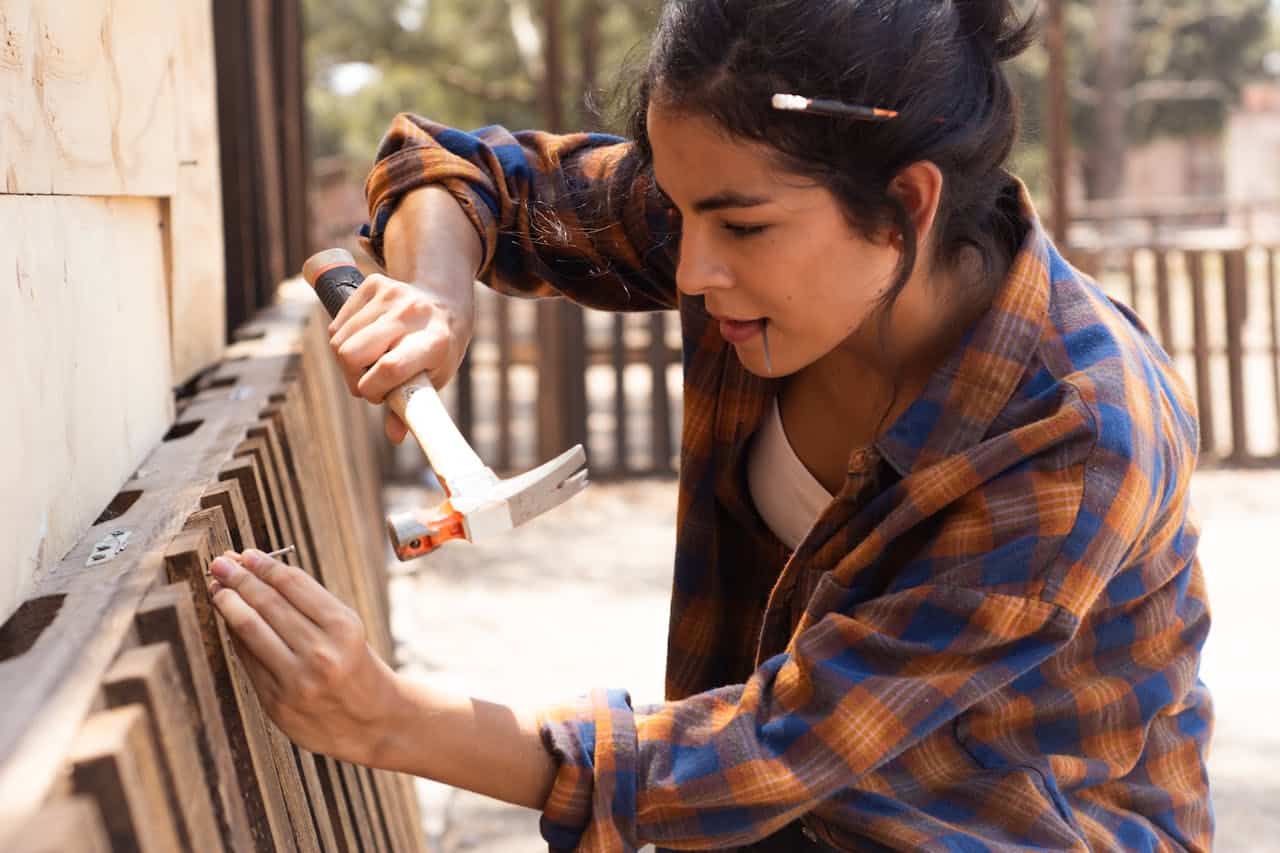Written by Alex Minett
While efforts to improve the representation of women in the workplace have grown by leaps and bounds over the past few years, certain sectors, such as construction, still have a ways to go.
According to the House of Commons Library’s Women and the Economy briefing paper, only 16% of jobs in the construction industry are held by women. Things are much the same in manufacturing, where only 26% of the workforce are women.

Image Source: KTN and The Manufacturer
But it’s not all bad news — the number of women in construction is growing. According to Go Construct, 37% of the industry’s new workers from higher education are women.
Why Are There So Few Women in Construction?
Outdated Stereotypes
A large part of construction’s gender diversity problem stems from women never considering the industry in the first place. This, in turn, comes from the sector’s failure to dispel outdated stereotypes and explain the exciting career opportunities awaiting women.
For starters, there’s the current advertising approach. Your average construction industry advert will feature men wearing hard hats or a man doing physical work or operating heavy machinery — sometimes all three at the same time.
Even the language in ads can be intimidating — often unnecessarily so.
Case in point: the advert from John Deere below.

While these adverts aren’t degrading or completely inaccurate, they only represent a fraction of the kind of work that happens in the construction industry.
Harassment and Sexism
The image of construction workers catcalling women walking past a job site is an enduring one for a reason. A 2017 survey reported in Business.co.uk found that a staggering 73% of women engineers have experienced some form of harassment, sexual discrimination or victimisation in the workplace. Meanwhile, a 2021 Randstad survey shows that 72% of women in construction have experienced gender discrimination in the workplace.
Unless the industry acts on these issues, it will be difficult to convince women to join construction.
Why the Construction Industry Needs More Women
Encouraging more women to join construction solves some of the industry’s most pressing problems. These include:
An Aging Workforce
According to the Chartered Institute of Building’s (CIOB) Real Face of Construction report, the next decade will see a steep rise in construction workers hitting pension age relative to the number of new workers joining the workforce — an increase not seen for around 50 years.
CIOB predicts that within the next two decades, the ratio of pension age workers for every 1,000 working-age workers will grow from 300:1000 to 360:1000. By 2060, that number will reach 400. One solution to mitigate this impending talent shortage is to bring in more women. But even then, this measure may not be enough due to compounding factors like Brexit.
A Worsening Skills Shortage
The impending worker shortage is particularly concerning given how the UK construction industry is currently struggling with a skills shortage.
According to the Construction Industry Training Board (CITB), the sector will need to hire 217,000 more new workers to keep up with the growth in construction output, which is predicted to reach 2019 (i.e., pre-pandemic) levels in 2022. The CITB adds that the most in-demand trades in terms of annual average recruitment requirement will be wood trades, other construction professionals and technical staff and construction managers.
However, two-thirds of managers in construction believe that the key to resolving the industry’s skills shortage is to have a more diverse workforce, opening the floodgates to not just women but also workers of varying ages and people of colour.
Diversity in the Workplace Is a Matter of When, Not If
Although the construction industry has been slow to embrace a gender-balanced workforce, things are finally changing. By opening your organisation’s doors to women and other underrepresented groups of society, you can create a culture of broader ideas and new approaches to problems. Apart from new perspectives, a diverse workforce also makes you more creative and adaptive to new situations.
Alex Minett
 Alex Minett is the Head of Product & Markets at CHAS, the UK’s leading health and safety assessment scheme and provider of risk mitigation, compliance and supply chain management services. With a working history in the audit and management consulting industry, Alex is experienced in implementing visions and strategies. Skilled in negotiation, management and business development, he is passionate about driving CHAS in its mission to safeguard organisations from risk in the UK.
Alex Minett is the Head of Product & Markets at CHAS, the UK’s leading health and safety assessment scheme and provider of risk mitigation, compliance and supply chain management services. With a working history in the audit and management consulting industry, Alex is experienced in implementing visions and strategies. Skilled in negotiation, management and business development, he is passionate about driving CHAS in its mission to safeguard organisations from risk in the UK.

